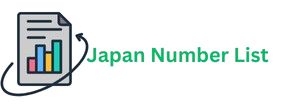Control of Labor is one of the industry’s main investments, and inadequate planning can result in idleness, rework and high overtime costs . PPC acts directly on the organization of the workforce, ensuring more balanced and efficient production.
Shift optimization and employee allocation according to demand
The PCP analyzes production demand in different periods and adjusts work shifts strategically.The balanced distribution of activities this is a key feature that avoids overload in some sectors and underutilization in others.Planning anticipates peaks and troughs in demand , allowing temporary hiring when necessary, reducing fixed costs with permanent labor.
How to avoid downtime and rework through PPC
- The system identifies possible bottlenecks in production , redistributing tasks efficiently.
- Reduction of errors in the production process through structured planning , avoiding reprocessing and wasted time .
- Monitoring team performance a let’s say jim’s company is growing and making adjustments in real time to ensure maximum productivity without wasting resources .
With an intelligent distribution of labor , the PPC ensures that production is efficient, without excess employees or unnecessary overload , reducing operational costs and optimizing team performance.
Maintenance and Equipment Costs
Industrial equipment is a valuable asset, and cell phone data unexpected failures can lead to production downtime, delays, and high emergency repair costs . PPC helps minimize these issues through effective maintenance planning.
Preventive and predictive maintenance through a well-structured system
- The PCP schedules periodic maintenance based on the equipment’s useful life and failure history , avoiding unexpected shutdowns.
- Predictive maintenance uses sensors and data analysis to identify problems before they occur, reducing the need for emergency repairs.
- Reduced costs with frequent part replacements by ensuring regular inspections and preventive adjustments .
Reduced machine downtime
- Strategic production planning allows maintenance to be scheduled at times of lower demand , avoiding operational losses.
- The use of software integrated into the PCP allows monitoring of equipment performance in real time. Anticipating failures and reducing the risk of unexpected downtime.
- Longer equipment lifespan , reducing costs with replacements and purchases of new machines.
With a well-structured PPC , the industry avoids excessive spending on corrective maintenance and reduces financial losses caused by production interruptions .
